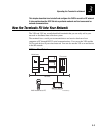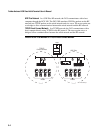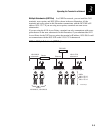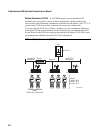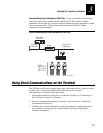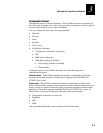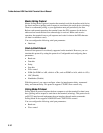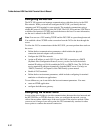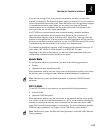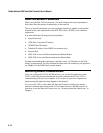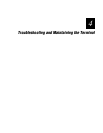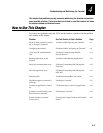
Trakker Antares 243X Hand-Held Terminal User’s Manual
nugget
39
3-10
Master Polling Protocol
Master Polling Mode D protocol requires the terminal to ask the downline serial device
for data it may have (polling) and to request to send data to the serial device (selecting).
There is no automatic polling, so your application must poll periodically for data.
Before each transmit operation, the terminal issues the SEL sequence for the device
addressed and sends the data if an acknowledge is received. Before each receive
operation, the terminal issues a poll sequence and waits for data or the RES character
(no data is available to send).
You can configure the following serial port parameter:
•
Baud rate
Point-to-Point Protocol
Point-to-Point protocol is not directly supported on the terminals. However, you can
simulate this protocol by setting the protocol to Configurable and configuring these
parameters:
•
Baud rate
•
Data bits
•
Parity
•
Stop bits
•
Flow control
•
EOM (Set EOM1 to \x0D, which is <CR>, and set EOM2 to \x0A, which is <LF>)
•
LRC (Disable)
•
Handshake (Disable)
With this protocol, you cannot configure values for intercharacter delay, turnaround
delay, and timeout delay. This protocol supports CTS/RTS flow control only.
Polling Mode D Protocol
Polling Mode D protocol requires the host computer to ask the terminal for data it may
have (polling) and to request to send data to the terminal (selecting). This protocol uses
an RS-232 interface and implements the user interface through reader commands.
Polling Mode D also supports XON/XOFF and CTS/RTS flow control.
You can configure the following serial port parameters:
•
Baud rate
•
Flow control




